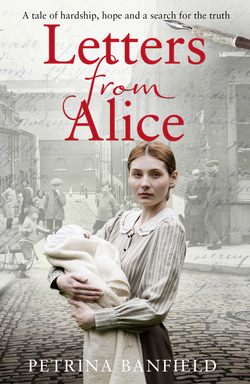Читать книгу Letters from Alice: A tale of hardship and hope. A search for the truth. - Petrina Banfield - Страница 7
Prologue
ОглавлениеUnlike doctors and nurses [the almoner] is a newcomer in the hospital world, but she finds all the benefits of its traditions at her disposal. Whether the almoner is there or not, a tapestry is being woven by the work of the hospital, but it may be an incomplete piece of work and apt to unravel if she does not play her part in gathering up and connecting the broken threads.
(The Hospital Almoner: A Brief Study of Hospital Social Science in Great Britain, 1910)
It was a little before seven o’clock in the evening on 17 April 1921 when twenty-eight-year-old almoner Alice Hudson summoned the police constable for help.
PC Hardwicke’s heavy boots tramped over the icy pavements in the east London district of Bow, Alice leading the way a few steps ahead. The weather during early April had been milder than usual, but over the last few days the temperature had plummeted, a depression from Iceland bringing gales over the eastern coasts and snow showers to the capital.
Daylight was beginning to fade as they reached their destination: a two-storey boarding house flanked by a derelict pub and a paper merchants. Alice had stopped by to see Molly Rainham half an hour earlier through concern for the young mother’s welfare, she later reported to the coroner. Despite knocking for several minutes and tapping on the frosted window pane, the only response had been an unidentifiable, plaintive bleat in the distance.
Hospital almoners were accustomed to a variety of reactions to their unannounced visits, but there was something strange about the silence echoing around the hall on the other side of Molly’s front door; a ghostly stillness that had sent Alice hurrying to the local police station.
From the notes in the almoner’s file back at the Royal Free Hospital, Alice knew that Molly may have been suffering from post-natal psychosis. According to reports she had initially coped well with motherhood, but seemingly overnight her demeanour had changed. With her husband on a military posting in Constantinople and no other family to speak of, Alice made a point of calling in on her patient whenever her schedule allowed.
‘We need to break in,’ the almoner insisted, as PC Hardwicke rapped again on the front door.
He was still tapping half a minute later as Alice scrabbled at the downstairs window and wrenched it upwards. Before the PC managed to reach the almoner, his long-tailed dark blue coat flapping behind him, she had already bunched the damp hem of her long skirt up in one hand and was clutching at the window frame with the other. In one motion she crawled forwards and hauled herself over the sill, the bobby pivoting on his heels and averting his eyes behind her.
A hundred yards to the east, the bells of St Mary le Bow boomed the hour. As the policeman followed Alice through the window, a seagull cried out mournfully in the darkening sky above, a reminder to the onlookers that had begun to gather outside the small property of their proximity to the docks and the wide sea beyond.
The passageway was dark. Perhaps to soften the impact of a sudden intrusion, Alice and the PC slowed when they reached the top of the stairs, then exchanged glances. Besides an unpleasant smell, there was an undertone of something else in the air, something disturbing. With a grim expression, the bobby turned towards the master bedroom at the front of the house.
A few steps later he faltered, stopping so abruptly that Alice almost walked into the back of him. The groan that escaped him should have offered some warning of the scene awaiting her, but when Alice stepped forwards she gasped in horror. Inside the room on a bloodstained mattress, Molly was stretched out on her back, her eyes and mouth gaping. The sinews in her neck were taut, her powdered cheeks etched with the chalky deposits of dried-up tears.
It was Alice who reached the bed first. The emergency drills she had learned as a Voluntary Aid Detachment (VAD) nurse assessing casualties during the war years came back to her instantly. She ran her eyes over Molly, methodically checking for vital signs. Half a second later, she turned to the constable, gave a grim shake of her head then hurried past him into the hall.
The door to the small bedroom at the back of the house stood open. Alice hesitated in the doorway for a brief moment, then ran over to the cot by the window, where Molly’s infant son lay. Bracing herself, she leaned over to feel the skin at the back of his neck. Her legs buckled then – it was warm to the touch. Had she been half an hour earlier in rousing the alarm, the deputy coroner for east London later reported to the inquest held in Stepney, the baby boy might have been saved.
The death of Molly and her son was the first in a series of shocking cases that Alice Hudson became involved in, one that marked a turning point in her career, redefining the way she viewed herself and the world around her. When Alice returned to the Royal Free Hospital on Gray’s Inn Road and wrote up her report of the incident, she was unaware of the tangled threads that tied Molly to a case that rocked her above all others: the web of deception that began to unravel months later, on New Year’s Eve, 1921.
